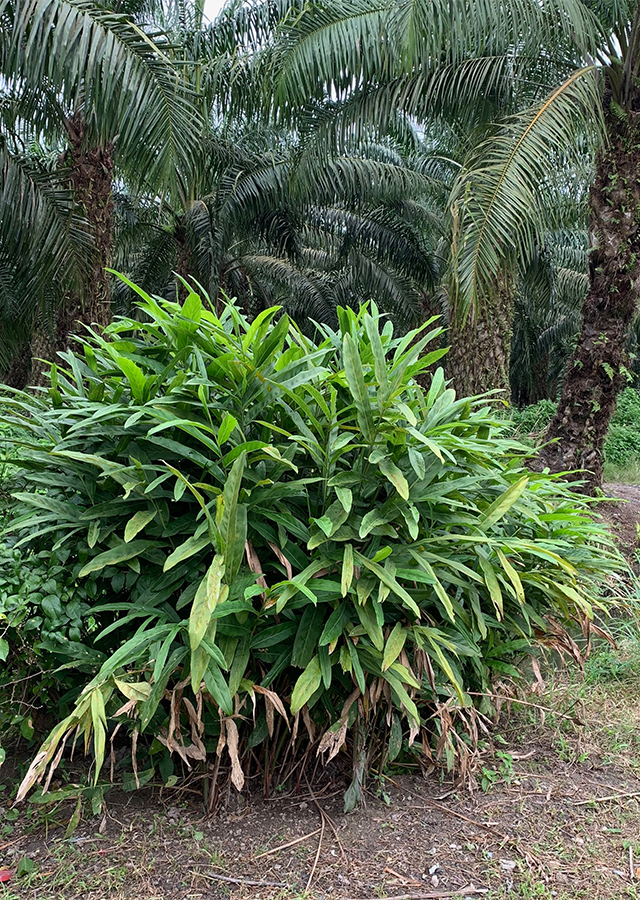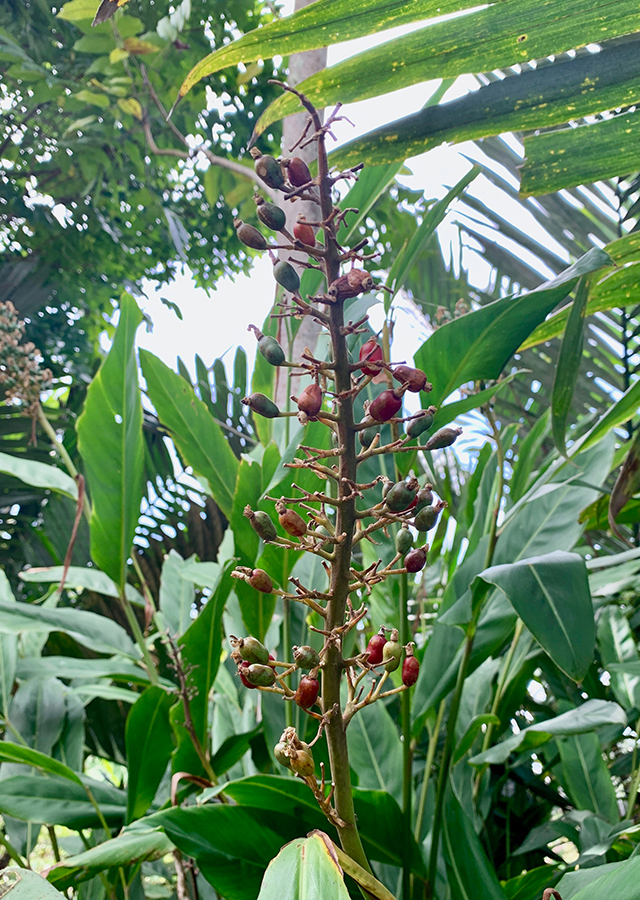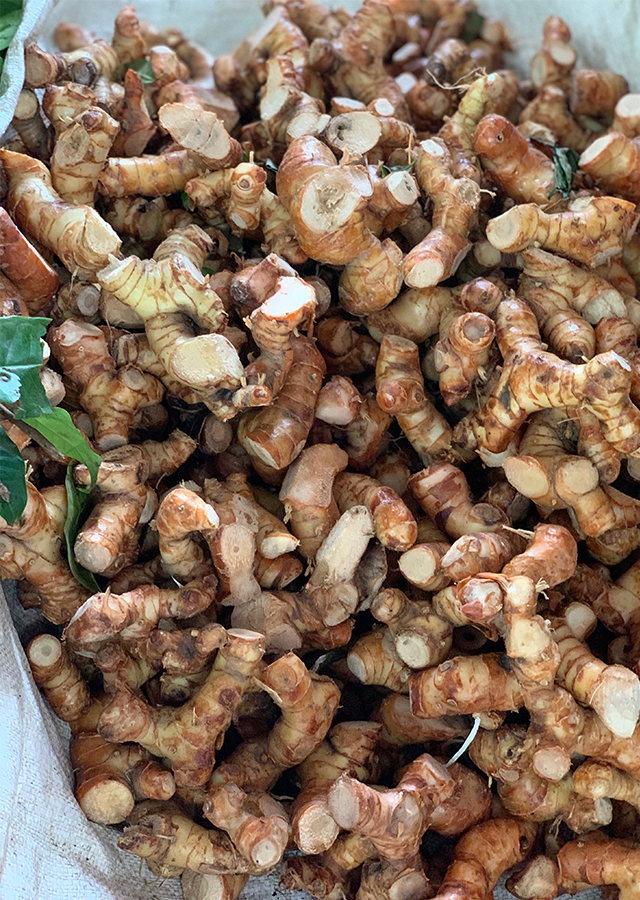Galangal
Alpinia galanga (L.) Willd.
Zingiberaceae
Location in our garden
Shading Area



Synonym
Maranta galanga L.
Alpinia alba (Retz.) Roscoe
Alpinia bifida Warb.
Habitus
Herbaceous. A robust, perennial, herbaceous plant growing in large clumps that can be 2-3.5 m tall
Part Used
Leaves
Stem
Rhizome
Growing Requirements
Full Sunshine
Need Shade
Drought Resistant
Habitat
Forest
Shrublands
Grassland
Overview
Ferocious distribution of Alpinia galanga occurs in southern China (Fujian, Guangdong, Guangxi, Hainan, Yunnan) and Taiwan, from India, to Southeast Asia (Indonesia, Malaysia, Myanmar, Thailand, Laos and Vietnam). Rhizomes are very widely used in daily cooking and have been recognized for the treatment of different diseases in various traditional medicine systems.
Vernacular Names
El-galangal (Arabic), Da gao liang jiang (Chinese), Alpinia (Brazil), Pa de gaw gyi (Burmese), Galanga (French), Galgant (German), Karphul (India), Garanga (Japanese), Lankauas (Philippines), Dok kha (Thai).
Agroecology
A tropical plant that is shade-loving. Its natural habitat is at altitudes of 100 to 1,300 m in forests, scrub or grasslands. A fertile, well-drained soil high in organic matter and growing well in shade or partial shade is commonly cultivated and favored. It does not withstand drought or waterlogged soil.
Morphology
- Rhizomes - are subterete, 3–5 cm in diameter, fibrous, hard, shiny pink, greenish, red or pale yellow and aromatic.
- Pseudostems - erect formed by the rolled leaf sheaths.
- Leaves - in two rows with suborbicular ligule and 1 cm long hairy petiole, oblong lanceolate, 25-60 long by 6-15 cm broad, glabrous or abaxially pubescent, base attenuate, apex acute or acuminate, alternate.
- Flowers - yellowish-white to greenish-white and fragrant with tubular calyx and corolla.
- Capsules - globose to ellipsoid, 1–1.5 cm by 0.7 cm, green turning to orange brown or red, with 3–6 seeds.
Cultivation
Propagated by division of the rootstock as new production starts. Around 1 week after planting, shoots from pieces of galanga rhizome emerge; within 4 weeks, 2 - 3 leaves have grown.
Chemical Constituents
Terpenoids, tannins, phenolics, flavonoids (galangin, kaempferol, kuersetin), saponins, carotol, cineole, fenchyl acetate, β-caryophyllene, methyl cinnammate, camphor.
Traditional Medicinal Uses
- The rhizomes have been used in the treatment of various illnesses such as fever, cough, hiccups, asthma, bronchitis, heart diseases, chronic enteritis, renal calculus, diabetes, rheumatism, kidney disorders, skin diseases, dyspepsia, colic, flatulence, gastralgia, borborygmus, emesis, dysentery, diarrhoea, scurf, swollen spleen, cancers of oral cavity and stomach and cholera.
- It is particularly valued for its relaxing effect on the digestive system and is used for the treatment of conditions such as indigestion, for the treatment of respiratory diseases, for the treatment of systemic infections, for the treatment of cholera and after birth. The digestive system is activated by aphrodisiac, aromatic, bitter, digestive, expectorant, pungent herbs.
- Galangal powder is used as a mouth freshener and for the treatment of mouth problems and bad breath. It can also be rubbed over the teeth and is very effective for toothache care.
- To treat bleeding, swollen gums and other gum-associated infections, a decoction prepared from roots is used as a gargle.


